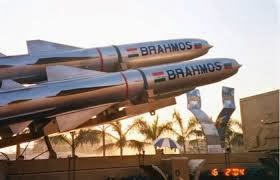The Philippines and the concept of Naval Guerilla Warfare
Figuratively, the Philippines is
teething when it comes to conventional weapons and equipments, and it may take a
long time coming to achieve its goal of a credible external defense posture principally due to budgetary contraint brought about among others by ineptitude in geopolitical affairs. On the desperate side of urgency however, there is a means to achieve parity
in case of conventional attack by a stronger and powerful opponent, and that is to adapt a cost effective and relevant doctrine of asymmetric warfare at sea. Geographically,
the Philippines
is strategically situated. It has 7107 islands whereupon more than 5000 of
which are uninhabited. It has 36,289 kilometers of external and internal
coastline, and given its proximity, the Philippines on its own can deny ingress
or egress at the South China Sea by selectively and discreetly transforming any of the uninhabited islands and
pertinent coastlines into missile carrier and utilize them as launching
platform for medium and long range missiles.
Long range cruise missiles such as the hypersonic Indian Brahmos with the range of 300-500 kilometers or the Russian Yakhont with the range of 120-300 kilometers. Other choices could be the Russian Club K; the Italian Otomat Teseo with 180 kilometers range; or the American made cruise missiles with similar range such as the Harpoon AGM 84; the Naval Strike Missile (NSM) by Kongsberg of Norway; and RBS 15 by SAAB of Sweden are high quality among many others. These missiles whether compositely or individually deployed are capable of denying access to thePhilippines
exclusive economic zone (EEZ) by hostile forces and can provide suppressive
fire when push comes to shove even beyond the EEZ boundaries. Imagine for example, if the Philippines is operating even a mere 50 units of Brahmos missile at a ballpark figure of say 300 million US
dollars or roughly 33% of the 41.2 billion pesos spent since 2010. The effect towards deterrence could be instantaneous and relatively perpetual with no additional long term substantial cost.
Another low cost and practical asymmetric weapon that thePhilippines
can and should adapt is the anchored naval mines which according to Wikipedia
can be had for as low as US Dollar 1.000/ unit. This is a formidable weapon for perimeter defense that can be placed and laid along the EEZ boundaries when things get really sour. A
thousand naval mine may only cost one million US Dollars, but realistically the Philippines
will need more than a thousand naval mines on account of its lenghty shoreline.
ThePhilippines must also invest on large numbers of low cost sea plarform like the fast attack craft similar to
but a little larger than what is recently procured to accommodate short and medium range
missiles. The fast attack craft given its small size provides greater maneuverability and speed and hence can be utilize along with the geographic
advantage to weed in and out of internal shorelines and natural coves to hide and shoot within the EEZ boundaries.
Spending a fraction of the modernization budget on these weaponry and equipment could turn the Philippines into a respectable adversary, at the same time it will be looked upon as a reliable and effective ally in a short time coming. Although, the aforementioned is never near enough to win a war, it will surely be very costly for the other end.
Long range cruise missiles such as the hypersonic Indian Brahmos with the range of 300-500 kilometers or the Russian Yakhont with the range of 120-300 kilometers. Other choices could be the Russian Club K; the Italian Otomat Teseo with 180 kilometers range; or the American made cruise missiles with similar range such as the Harpoon AGM 84; the Naval Strike Missile (NSM) by Kongsberg of Norway; and RBS 15 by SAAB of Sweden are high quality among many others. These missiles whether compositely or individually deployed are capable of denying access to the
Another low cost and practical asymmetric weapon that the
The
Spending a fraction of the modernization budget on these weaponry and equipment could turn the Philippines into a respectable adversary, at the same time it will be looked upon as a reliable and effective ally in a short time coming. Although, the aforementioned is never near enough to win a war, it will surely be very costly for the other end.







Comments
Post a Comment